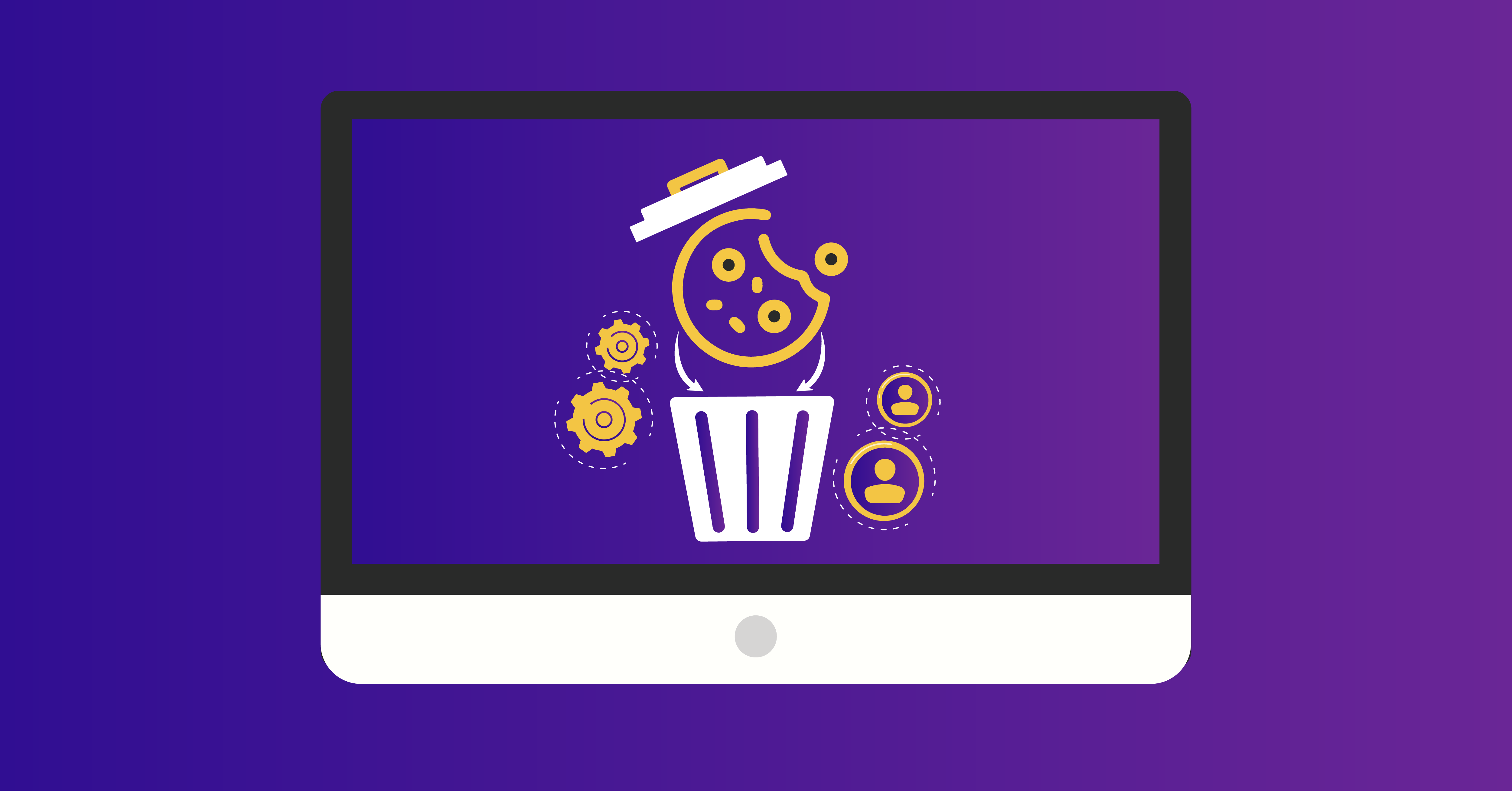Cookieless World: What Publishers Need To Do
The long reign of the infamous third-party cookies on Google Chrome is set to descend. The elimination of cookies will be acquired in phases and the process is set to begin by 2024. In an attempt to prioritize privacy-centric solutions, Google is following the footsteps of other browsers like Safari and Bing. However, this significant move may put publishers in a precarious position as their current methods of user tracking and advertising may be compromised.
Depreciation of cookies may limit audience targeting for publishers as well as businesses. But, at the same time, it offers a window to new opportunities that focus on building direct, first-party relationships. The programmatic advertising industry is already investing in customer data platforms as well as AI-powered targeting to overcome the demise of third-party cookies.
Will the depreciation of third-party cookies on Google begin or end a golden age in the history of ad tech? Let’s find out!
What are the potential challenges of a cookie-less world?
- Delivering personalized ads
The absence of third-party cookies translates to no user data and audience segmentation. User identification can be a massive challenge faced by marketers. Currently, these cookies offer information regarding the user’s browser history, search history, demographics, and geography. This helps marketers create a profile that determines the user’s interests, preferences, and behavior. With the lack of third-party cookies, access to this information will be limited and eliminated eventually causing an obstacle in delivering targeted and customized ads.
- Impact on bidding for ad units
Currently, the bidding strategy on ad tech platforms is attached to third-party cookies. This cross-site mechanism helps collect user data and the same is presented to the advertisers at the time of bidding. Most publishers depend on open auctions to get the highest bidding for their ad inventories. With the depreciation of third-party cookies, there is a chance that this is moved to direct deals or closed auctions affecting the pricing and bidding. Large-scale publishers can use their first-party data to make the most of their ad inventories. But small-scale publishers may find it hard to navigate this change in the ad tech ecosystem.
- Target and re-target audiences across websites
Exchanging data within domains will come to an end after the end of third-party cookies. This will put an end to pixel tracking, predictive modeling, and user profiling based on their behavior. The relevancy and efficacy of ad campaigns may suffer. Hence, ad matching and retargeting will not be possible in the future, unless publishers and advertisers switch to first-party data, contextual targeting, and AI-driven targeting.
- Measuring ad performance
Tracking and measurement of ad performance can be challenging without third-party cookies. While marketers can still access the analytics, its relevance may be compromised. Without the ability to track users across different devices using cookies, it may be more difficult to accurately track the performance of ads and attribute conversions and sales to specific ads or campaigns.
- Reaching customers and prospects online
Third-party data gave publishers a chance to build a community and reach new users. But without cookies, access to user information will be limited, especially for small-scale publishers. The scope for targeting and personalization will be minimized which will ultimately make it difficult for the publishers and advertisers to reach new customers and drive conversions.
These potential challenges will disrupt the digital marketing ecosystem. But with the available technology and ongoing advancements, publishers can turn this around.
5 things that publishers need to do to stay ahead of the curve
- Collect first-party data
A report from a study conducted by Delloite-Google in 2022 in the APAC region suggests that 65% of respondents are planning to increase their focus on first-party data. When consumers are directly sharing their data with marketers, the level of accuracy and security is top-notch. Hence, the delivered ads are built with a higher understanding of their audience. Publishers and advertisers should aggressively invest in first-party data and offer a fair value in return in the form of personalized ads and enhanced user experience.
- Provide disclosure about data collection
The clash between data privacy and the need for personalized interactions has led to a ‘give-and-take’ settlement between users and marketers. A Longitude study sponsored by Verizon suggests that 45% of the 18-24 age group surveyed (Asia Pacific, Europe, and Canada/U.S.) would share their data in exchange for a more intuitive and personalized user experience. However, 69% of all respondents would avoid a company that had suffered a data breach. As long as the collection and usage of user data are clarified, first-party data collection can be conducted seamlessly.
- Create an immediate feedback system
An immediate feedback system helps publishers capture the valuable insights of their audience on a real-time basis. It not only helps them to access user data but also helps to identify and address any issues with the content or user experience. Publishers can churn out more readable content and collect data for contextual targeting. This direct line of communication can be established through feedback forms, contact forms, comment sections, or user rating systems.
- Focus on cookie-less marketing channels
Alongside first-party data collection, marketers should circle back to the traditional or existing marketing channels that do not require cookies at all. Marketing veterans know that SMS, web push notifications, and email marketing have always been an integral part of a 360-degree marketing strategy. Furthermore, publishers should also prioritize content marketing to drive traffic and generate leads without third-party cookies. With the upcoming elimination of cookies, marketers can focus on people-based marketing over device-based marketing.
- Build data retention mechanisms
Without access to third-party cookies, publishers need to figure out ways to store and retain user data. They need to focus on collecting important data points such as users’ devices, such as screen size, operating system, and browser version, to create a unique identifier for each user. This can be done through registration forms, surveys, or other interactive elements on the site. Furthermore, they can store data on the server side, rather than on the user’s device, to maintain control over the data and ensure it is secure. This can include databases, cloud storage, or other data management solutions.
The elimination of cookies will bring a paradigm shift with respect to control. Contextual targeting will be prioritized over intrusive retargeting, users will have more power over the distribution of their personal information, and direct relationships and community building will lead. A cookie-free world means a privacy-conscious advertising ecosystem, where users’ consent is respected and valued. To prepare for this shift, publishers have to change their methods, rethink their goals, and use programmatic targeting options in an attempt to provide customized user experiences.




Leave a Reply